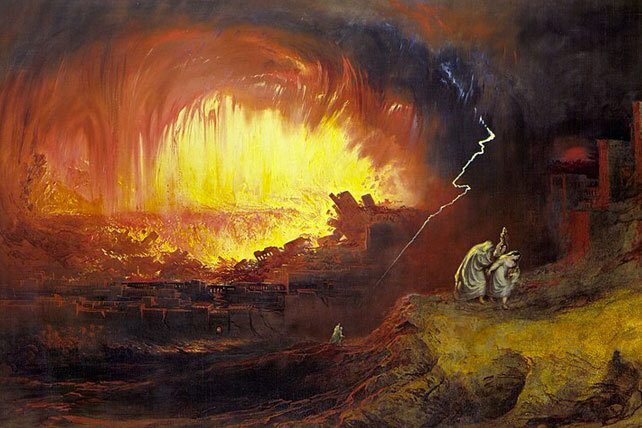After 15 years of research, scientists have published findings about an “intense firestorm” that destroyed a city in modern-day Jordan about 3,600 years ago. The 21 co-authors conclude that a small meteor likely demolished the city of Tall el-Hammam.
An ongoing debate about whether that’s the biblical city of Sodom was beyond their scope, say researchers. But they did “consider whether oral traditions about the destruction of this urban city by a cosmic object might be the source of the written version of Sodom in Genesis.”
Tall el-Hammam: Only a ‘Cosmic Impact’ Could Do This
While excavating Tall el-Hammam, archaeologists found a dark, five-foot “jumbled layer of charcoal, ash, melted mudbricks, and melted pottery,” indicating that “an intense firestorm” had demolished the 100-acre city. Natural disasters such as volcano and fire couldn’t have caused temperatures high enough to melt pottery or create the vaporized sand grains and “diamonoids” that researchers uncovered. “The only natural process left,” they note, “is a cosmic impact.”
The meteor suspected of destroying Tall el-Hammam was likely similar to one that flattened 80 million trees in Tunguska, Russia, in 1908—and a “much smaller version of the giant miles-wide rock that pushed the dinosaurs into extinction 65 million years ago.” It flew toward the ancient city’s estimated 50,000 inhabitants at a speed of 38,000 mph, causing air temperatures to soar above 3,600 degrees when it hit. “Almost immediately,” scientists write, “the entire city was on fire.”
As for why the city and surrounding areas were “abandoned for several centuries” afterward, researchers say, “It may be that high levels of salt deposited during the impact event made it impossible to grow crops.” That “hypersalinity,” likely from vaporized Dead Sea water, remained in fields for hundreds of years due to the area’s low rainfall.
In their paper, published in the journal Scientific Reports, researchers speculate whether an eyewitness survived and passed down an oral tradition that “became the source of the written story of biblical Sodom in Genesis.” Chapter 19 of that biblical book describes how God “rained down burning sulfur” on Sodom and Gomorrah because of the people’s wickedness and turned Lot’s wife into a pillar of salt when she disobediently looked back at the destruction.
The paper notes: “The description in Genesis of the destruction of an urban center in the Dead Sea area is consistent with having been an eyewitness account of a cosmic airburst, e.g., (i) stones fell from the sky; (ii) fire came down from the sky; (iii) thick smoke rose from the fires; (iv) a major city was devastated; (v) city inhabitants were killed; and (vi) area crops were destroyed.”

